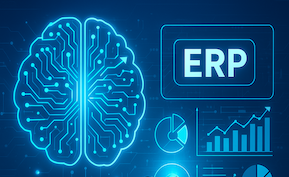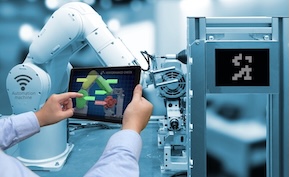Business Intelligence
Beyond BI: How Predictive Dashboards Are Driving Proactive Business Decisions

Business intelligence (BI) has evolved. The next frontier isn’t just seeing what happened—it’s knowing what’s about to happen. Powered by AI and machine learning, predictive dashboards are transforming data visualization from passive reporting into active foresight. They’re enabling businesses to identify risks, forecast outcomes, and make data-driven decisions before problems occur.
From descriptive to predictive analytics
Traditional dashboards summarize historical data—revenue, performance, and KPIs from the past week or quarter. Predictive dashboards go a step further by using AI models and real-time data streams to anticipate what’s next. Instead of reacting to lagging indicators, enterprises can act proactively on leading ones.
- Descriptive BI: Answers “What happened?”
- Diagnostic BI: Answers “Why did it happen?”
- Predictive BI: Answers “What will happen?”
- Prescriptive BI: Answers “What should we do next?”
How predictive dashboards work
- Data integration: Real-time pipelines connect multiple data sources—ERP, CRM, IoT, and web analytics.
- Model training: Machine learning algorithms identify correlations and trends in historical data.
- Forecast generation: Predictive models project future metrics like sales, churn, or demand.
- Visualization: Dashboards translate forecasts into interactive charts and risk indicators.
- Automation: AI triggers alerts or workflow actions based on predicted anomalies or thresholds.
Key benefits of predictive dashboards
- Proactive decisions: Identify issues or opportunities before they impact results.
- Continuous forecasting: Replace static planning with live, adaptive projections.
- Increased accuracy: Machine learning models refine themselves as new data arrives.
- Faster insight delivery: AI eliminates manual analysis cycles and data wrangling.
Popular technologies enabling predictive BI
- Power BI + Azure Machine Learning: Combine live dashboards with AI-powered forecasting models.
- Tableau Pulse: Automates trend detection and natural language explanations for predictions.
- Google Looker + BigQuery ML: Runs SQL-based predictive modeling directly in the cloud.
- Salesforce Einstein Analytics: Brings predictive forecasting into CRM environments.
- Databricks AutoML: Accelerates model training for real-time, embedded analytics.
Common predictive metrics to track
- Customer churn probability: Forecast the likelihood of customer loss before it occurs.
- Sales pipeline conversion: Predict deal closures based on behavioral and historical data.
- Inventory demand forecasting: Anticipate product demand and avoid stockouts or overstocking.
- Cash flow projections: Estimate liquidity and budget adjustments in advance.
- Equipment failure prediction: Predict maintenance needs in manufacturing and logistics.
Implementation roadmap
- Audit data readiness: Identify clean, relevant datasets for model training.
- Select use cases: Start with high-impact metrics like churn or sales forecasting.
- Choose the right platform: Opt for cloud-native BI tools with embedded machine learning capabilities.
- Monitor and retrain models: Continuously improve accuracy through feedback loops.
- Enable explainability: Use transparent AI techniques to ensure trust and governance.
Challenges and considerations
- Data drift: Predictive accuracy declines if model inputs change over time.
- Bias and fairness: AI predictions must be monitored for ethical and regulatory compliance.
- Integration complexity: Real-time prediction requires seamless connection between data systems.
- Change management: Teams must trust AI-driven insights and adapt workflows accordingly.
KPIs to measure predictive success
- Prediction accuracy rate: % of forecasts matching actual outcomes.
- Model latency: Time between data input and prediction output.
- Decision response time: Speed of business reaction to AI-driven alerts.
- Revenue uplift: Increase attributed to proactive decision-making.
- Operational cost reduction: Savings from preventing errors or inefficiencies early.
FAQs
What are predictive dashboards? Predictive dashboards use AI and machine learning to forecast trends and outcomes, helping businesses act proactively.
How are they different from traditional BI dashboards? Traditional dashboards report past data, while predictive dashboards anticipate future performance using AI models.
What industries use predictive BI? Common users include finance, retail, healthcare, logistics, and SaaS companies seeking real-time forecasting.
Which tools support predictive analytics? Platforms like Power BI, Tableau, Looker, Databricks, and Salesforce Einstein offer predictive capabilities.
Bottom line
Predictive dashboards mark the evolution of business intelligence—from looking back to looking forward. By integrating AI and real-time data streams, organizations can detect opportunities, mitigate risks, and act decisively. In today’s economy, the best-run companies aren’t just data-driven—they’re data-proactive.






